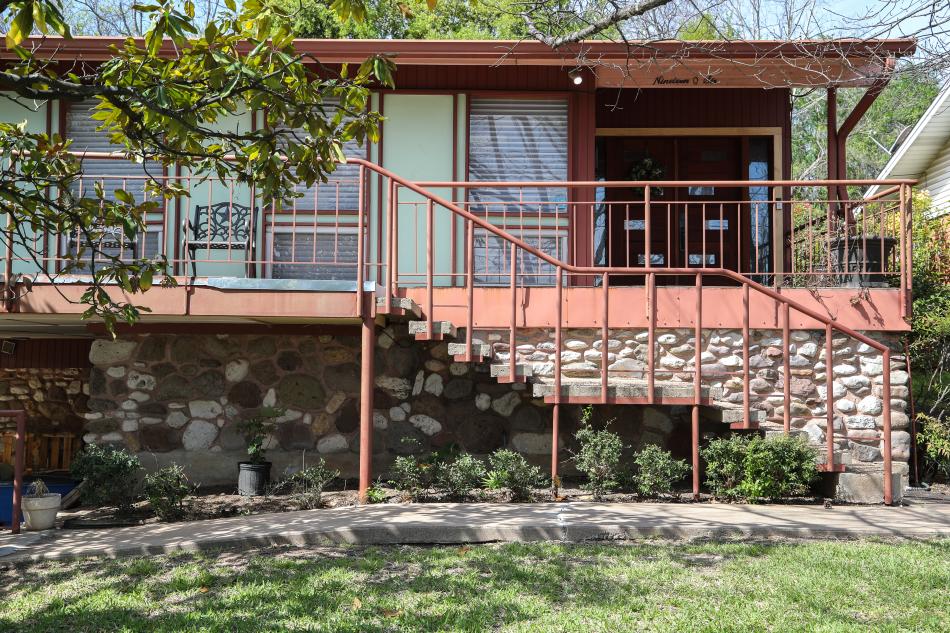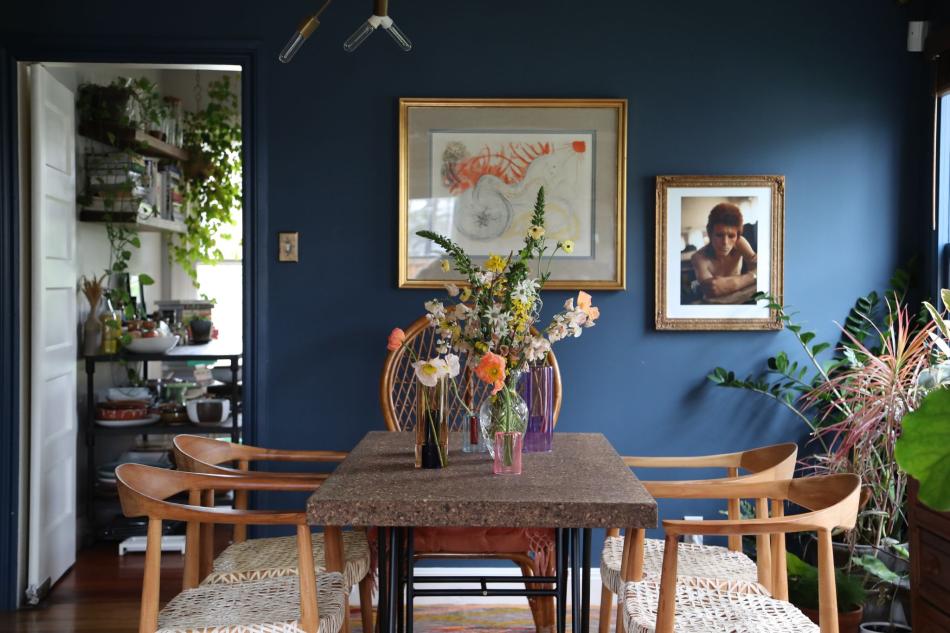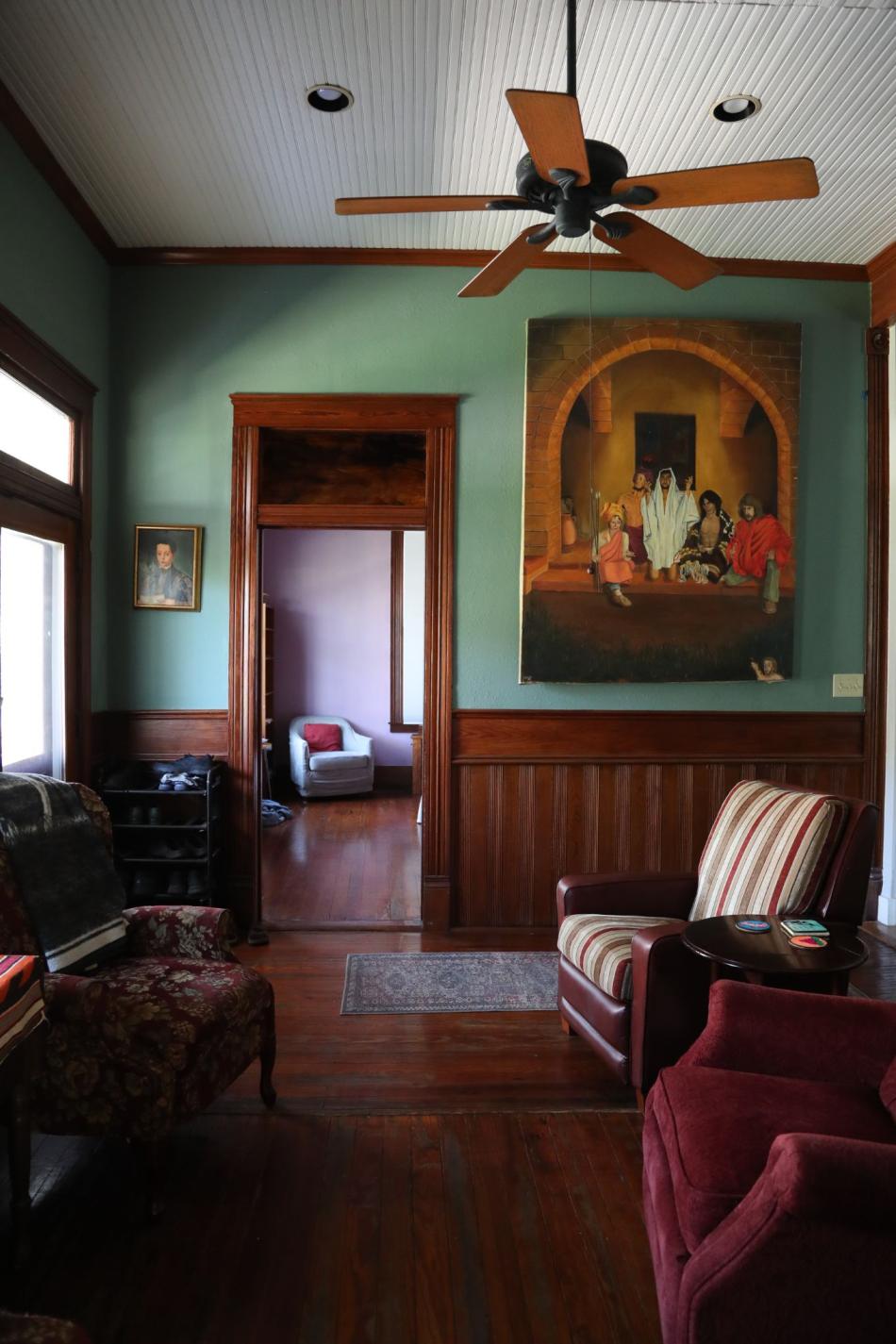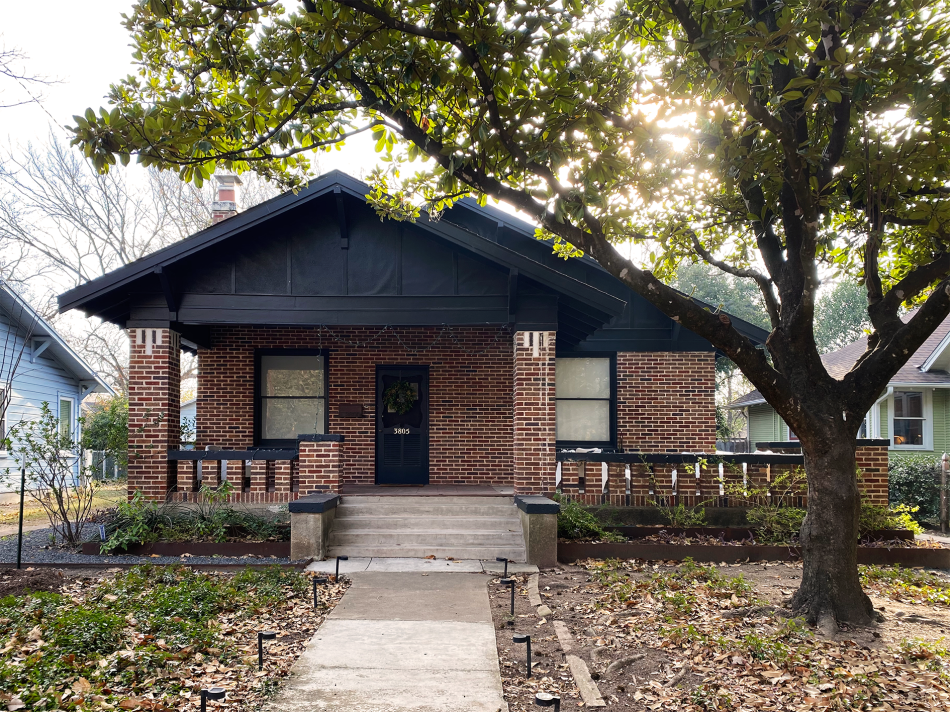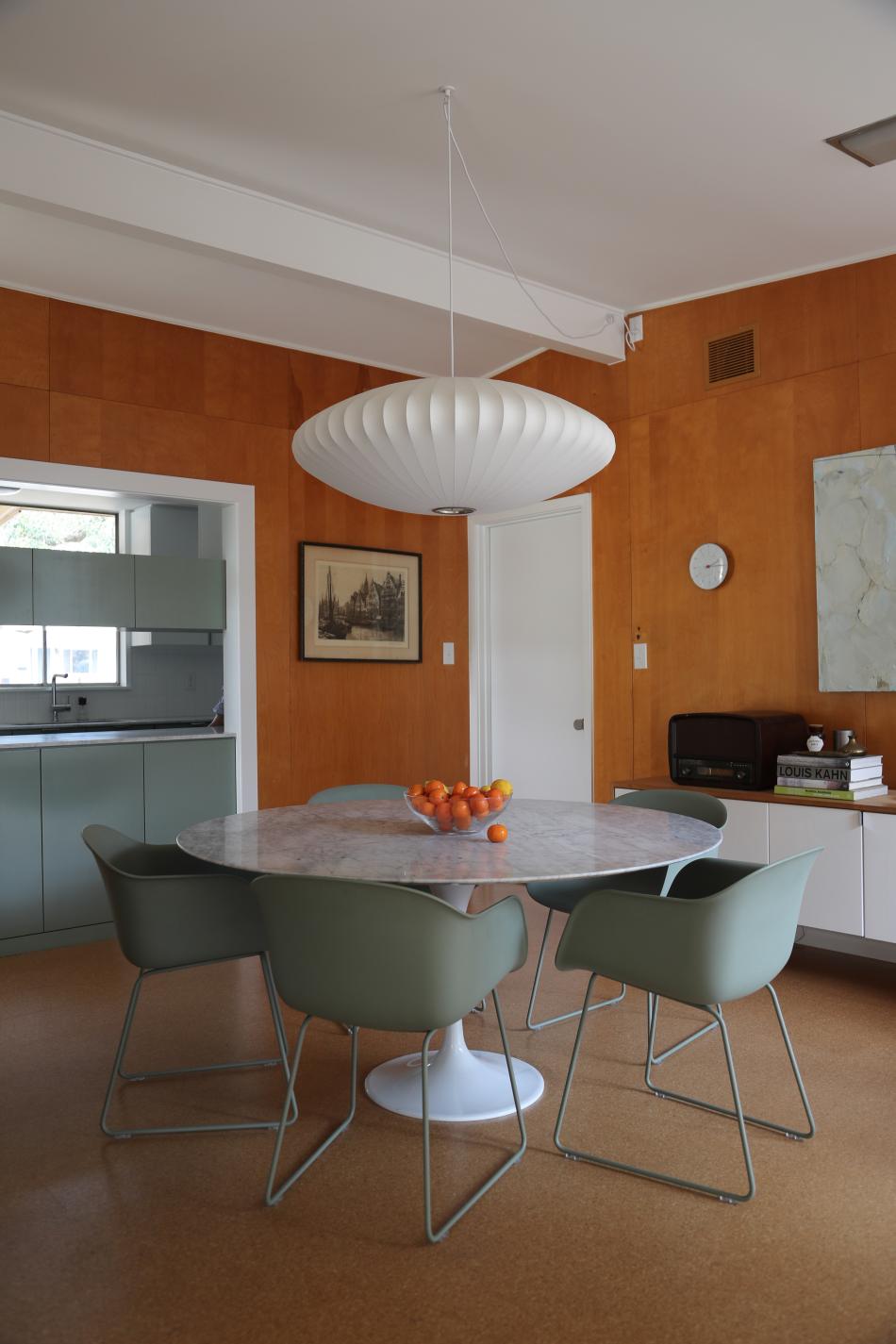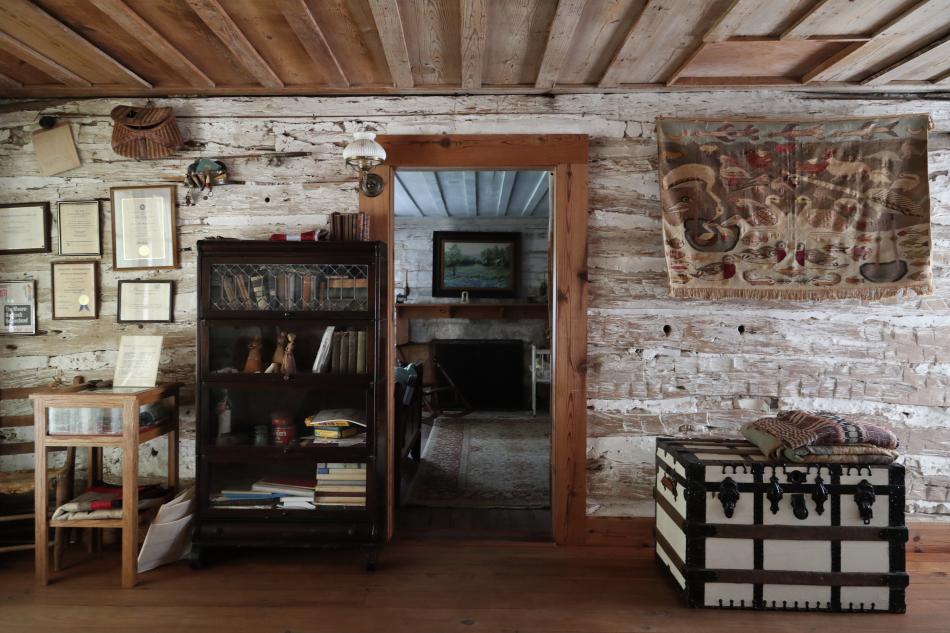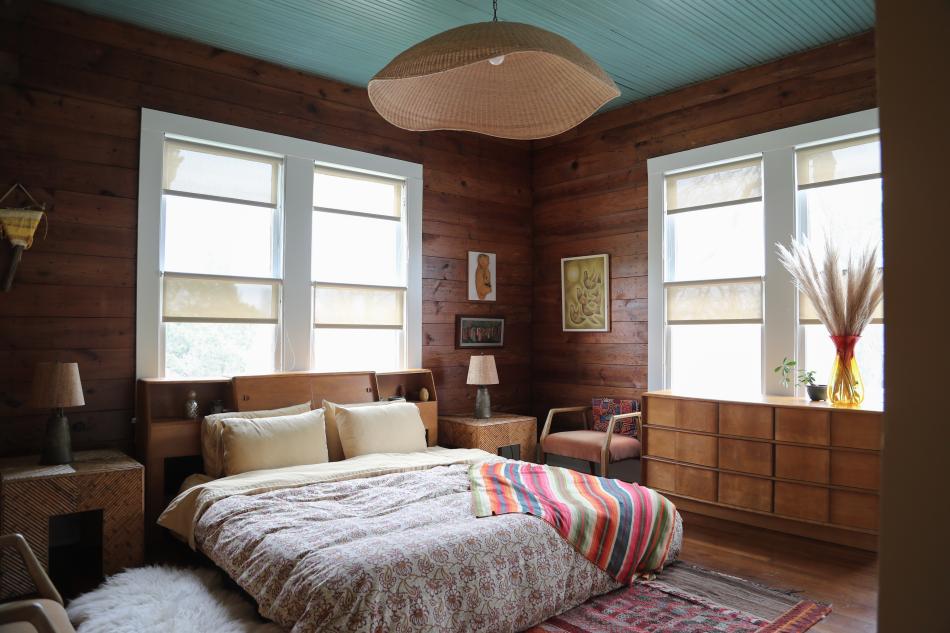Preservation Austin, the nonprofit organization that cultivates and champions the city's historic and cultural landmarks, will showcase a 10-house sampler from the past century in its of 40th homes tour April 20 and 21.
The 2024 Homes Tour includes a variety of historic landmarks from several eras, ranging from a log cabin built when Texas was barely a state to a midcentury split-level designed by its first licensed Black architect.
The annual fundraising event's April 16 VIP party will be at Southwind, the former residence and studio of notable Austin artist Seymour Fogel, which is not on the 2024 Homes Tour.
New this year is the Homes Tour Block Party in Rogers-Washington-Holy Cross Historic District, an East Austin neighborhood with boundaries on East 21st Street on the north, Cedar Avenue on the east, East Martin Luther King Jr. Boulevard on the south, and Chestnut Avenue on the west — and is produced in partnership with the city of The Block Party will be held in partnership with the city of Austin’s Equity-based Preservation Plan initiative, a major revision of its outdated current preservation plan. The block party will be free to the public.
Preservation Austin Homes Tour 2024
(Descriptions by Preservation Austin)
Balcones Drive | Saturday, April 20
Designed by Emil Niggli & Barton D. Riley, prominent architects with multiple designs on Balcones Drive, the home was constructed by Douglas H. Hicks, a local builder who worked with other Austin modernists like Roland Roessner. In 1959 Gerald and Emily Stafford, both educators, bought the property from Hicks, who likely built it on spec. Gerald, a well-known professor of geology at the University of Texas at Austin, was captivated by the scientific properties of glass and potential uses in Modern design, experimenting with the material while designing and building coffee tables. The glassy expanses of the Balcones Drive house were understandably irresistible.
Givens Avenue | Saturday, April 20
Distinguished Austin educators T.C. and Thelma Calhoun represented the wave of Black professionals commissioning homes in East Austin as the emergent African American middle class sought out suburban living in a segregated city. Designed by local architect Hal Starkey in 1959, the residence was intended to be oriented around a pool that was never built; however, the many sliding glass doors intended for pool access remain and T.C. used to joke that he could escape from any room in the house, even the bathroom! The home’s California Ranch plan emphasizes indoor-outdoor living while mid-century modern features like vaulted ceilings, wood paneling, peachy tiles, clerestory windows, and original furnishings remain.
Maple Avenue | Saturday, April 20
This 1963 home is the first residence designed by pioneering architect John S. Chase, the first Black graduate from the University of Texas School of Architecture and the first Black architect licensed by the State of Texas. The distinctive multi-level home features a stone, glass, and paneled facade under a cantilevered flat roof.
Breeze Terrace | Saturday, April 20
This endearing Minimal Traditional-style home embodies the postwar architectural character of the Cherrywood neighborhood. Original homeowners Star and Donald Nichols became a part of this pattern of development when they built this home on Breeze Terrace in 1946. A thoughtfully-designed ADU complete with an income-producing studio apartment and creative workspace designed by Forge Craft Architecture + Design was built in 2020, adding gentle density to this friendly single-family neighborhood.
East 10th Street | Sunday, April 21
Constructed circa 1887, the dwelling is clad in cedar shiplap siding and features a beautifully restored full-width porch complete with turnpost columns and upper trim spindles. The 10th Street home was originally built by carpenter and contractor John T. Depew, one of Austin’s earliest home builders. Other 19th century residents–of French and Italian descent–included a fireman, a railroad timekeeper, a grocery store owner, and a barber. In the 20th century, as segregation policies altered the demographics of East Austin, leaders in the city’s Black community took up residence including Eliza “Lizzie” Hawkins, a cook noted for chartering Ebenezer Baptist Church, and later the Frazier family, including influential–and famously formidable–L.C. Anderson English teacher Lucile Frazier.
Avenue H | Sunday, April 21
This recently restored 1924 Craftsman style home is one of the earliest built in the Shadow Lawn Historic District, and stands out in this Tudor Revival-style pocket of Hyde Park. Original homeowners John and Myra Hord Wattinger purchased the lot from Monroe Shipe’s M.K.&T. Land Company. John Wattinger, a professional electrician and plumber, likely helped construct the home himself. Agnes Owens, a member of Austin’s prominent Lebanese-American Joseph family, purchased the house in 1961. Agnes and her three sisters were all beauticians and all moved into houses on Avenue H to raise their families together as part of this tightly knit community.
La Ronde Street | Sunday, April 21
Nestled under gracious live oaks, the La Ronde Street cul-de-sac boasts an impressive collection of postwar modernist architecture. Allegedly named after a racy French film from the early 1950s, the small tract was developed by esteemed architect Herbert C. Crume. A renovation by Cuppett Kilpatrick Architects reconfigured the home’s kitchen, entry, and bathrooms but retained essential mid-century modern elements like the freestanding brick fireplace, plywood paneling, and open, light-filled spaces accented by cool modern tones. The exterior of the home remains unchanged and is defined by a classic modern profile, characterized by a graceful low-sloped roofline, an attached carport, and original floor-to-ceiling aluminum window walls.
Sinclair Avenue | Sunday, April 21
The Moore-Hancock Homestead was constructed circa 1849, when the City of Austin was barely ten years old and the State of Texas was a fledgling three years old. This rare example of pioneer architecture consists of three structures: a dogtrot log cabin, serving as the primary residence; a log guest house, historically used as a barn; and a limestone summer kitchen with a cellar beneath. Irish-born merchant Martin Moore and his wife Elizabeth White Moore built the homestead using cedar logs and rafters interlocked with half-dovetail notches, without utilizing any nails. The property remains an important link to the history of Black Austinites during the Reconstruction Era. Designated a historic landmark at the local, state and national level, today the home is the last remaining log cabin structure in Austin on its original site.
Bluebonnet Lane | Sunday, April 21
This stately American Foursquare-style home was built for the Von Rosenburg family, descendants of German pioneers, and recently celebrated its centennial. The home was constructed in 1922, located outside of Austin’s city limits on a large, rural plot. As the city developed, the home was moved (to accommodate suburban growth) and subdivided (to accommodate sibling rivalry). Today, the house has been restored to a single-family home though it still bears myriad layers of history – including remnant quirks of the duplex remodel and even hundred-year-old features like wood windows, oak floors, and longleaf pine crown molding and wainscoting.
Alta Vista Avenue | Saturday, April 20 (pictured at top of article)
Built for Alden and Mabel Davis, the home is often referred to as the “Mabel Davis House” in honor of her towering civic achievements. Named Austin’s “Most Worthy Citizen'' in 1961, Mabel was devoted to supporting various gardening, fine art, and healthcare causes, serving as director of Red Cross volunteer services in Austin during World War II, chairman emeritus of Austin’s Parks and Recreation Board, and organizer of the Texas Federation of Woman’s Clubs. Both the Zilker Rose Garden and Mabel Davis Park are named in her honor.







